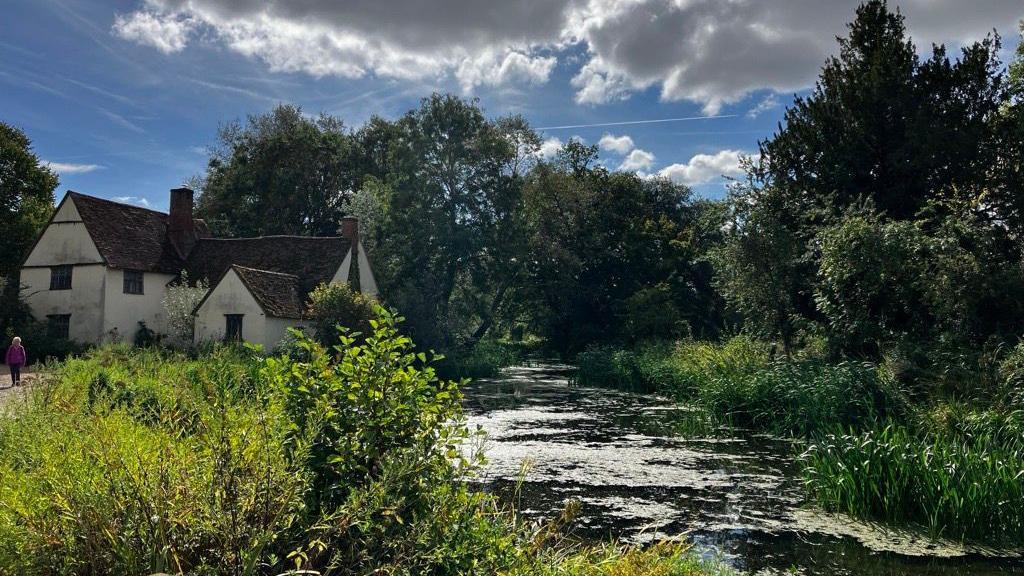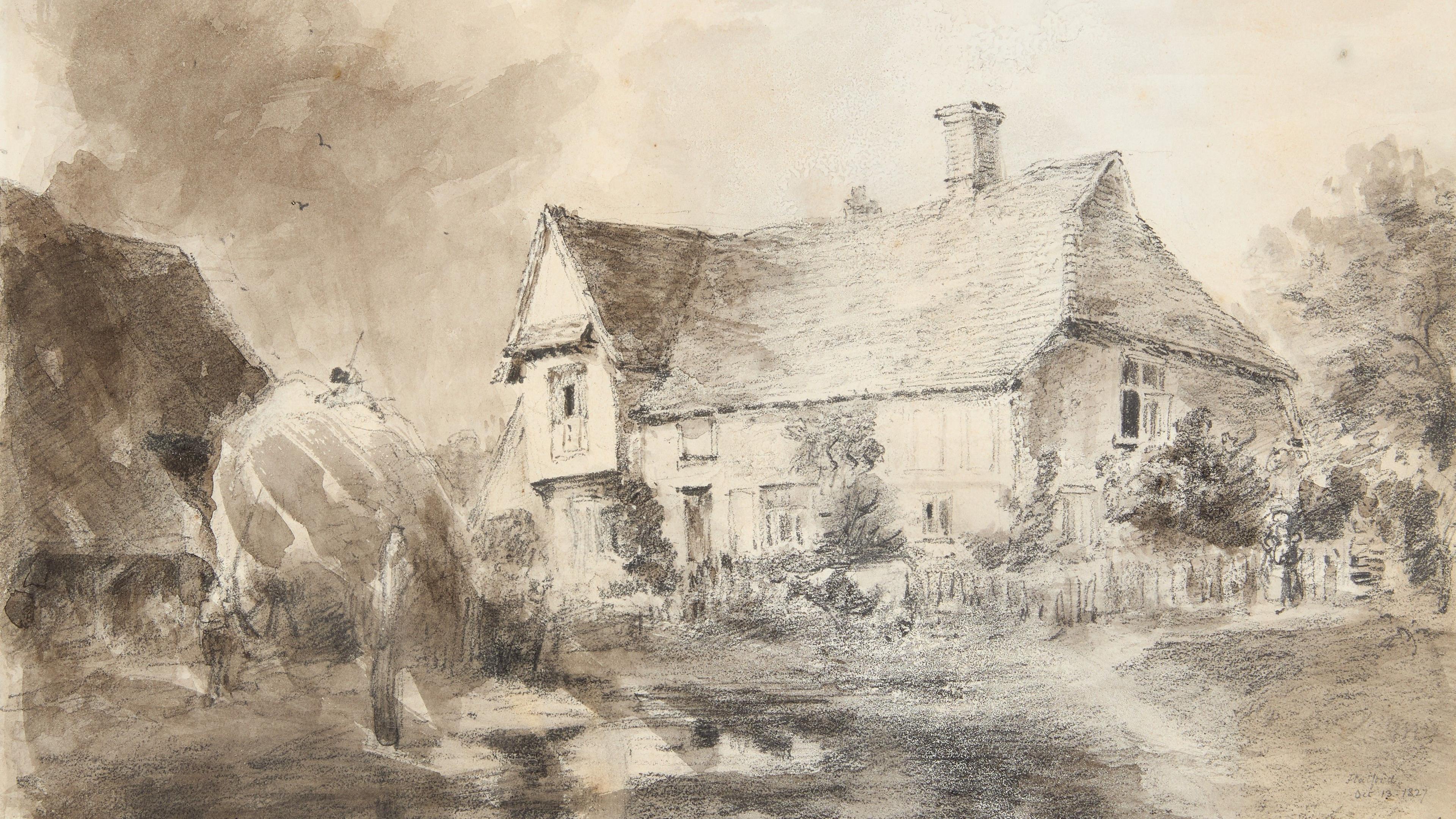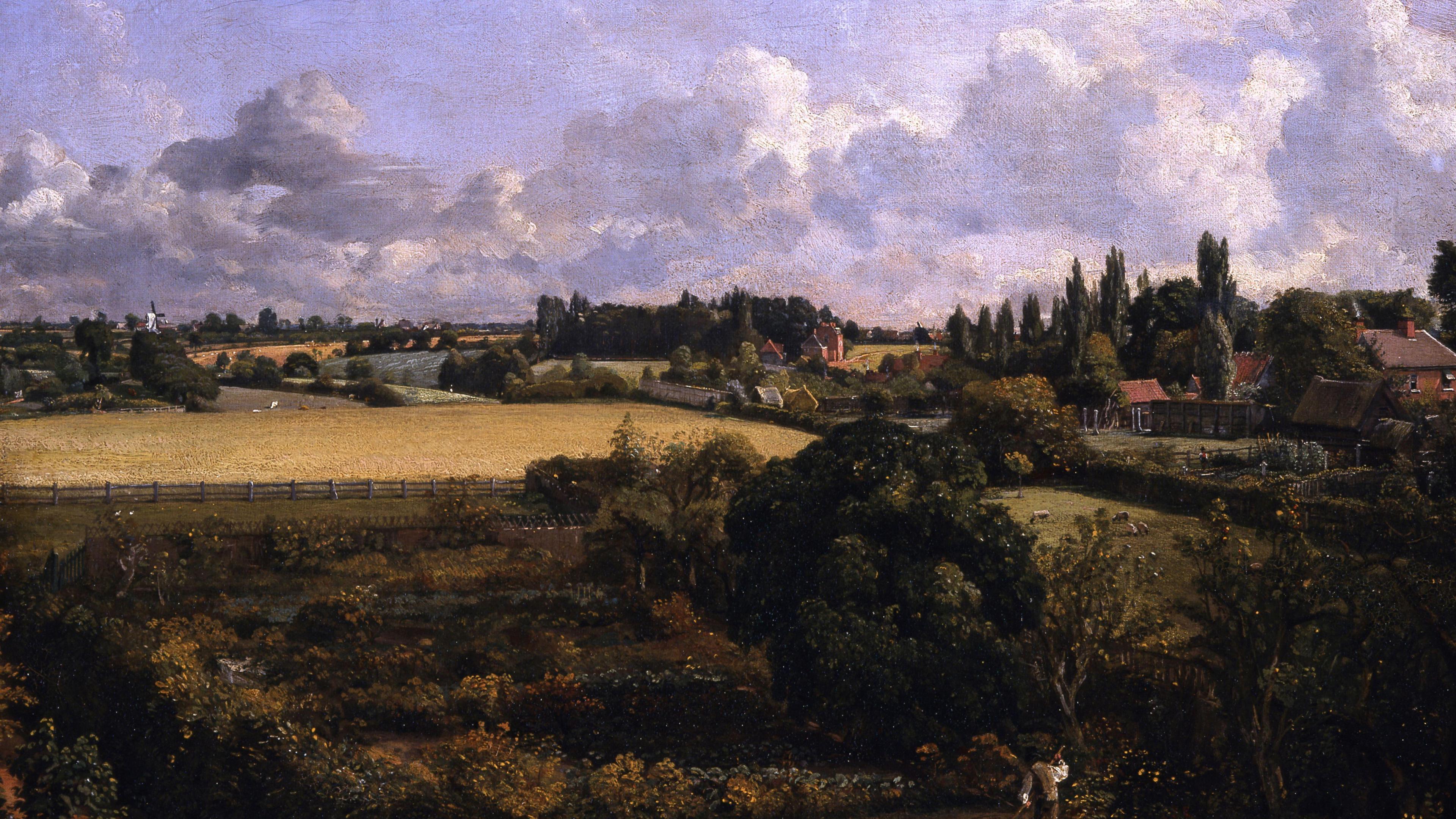What is The Hay Wain and why is it so significant?

The Hay Wain is being exhibited in Suffolk for the first time since it was painted in 1821
- Published
John Constable and his work is synonymous with Suffolk, and next year one of his most famous pieces, The Hay Wain, will go on display in the county for the first time. But if you are not from the area, you might be wondering what is The Hay Wain and why is it so significant?
Who was John Constable?

John Constable, shown in a self portrait from about 1800, gained notoriety after his death
John Constable was born in 1776 in East Bergholt, Suffolk, as the eldest son of a wealthy mill owner.
He did work for his father, but he had a passion for painting and in 1799 decided to pursue art as a vocation.
Constable moved to London to enter the Royal Academy Schools in 1800, aged 24.
During his career he produced many paintings of the Suffolk countryside and around the River Stour, which gave the area the name Constable Country.
Despite his many works, Constable struggled with recognition and sold very few pieces when he was alive.
He died in 1837 in London aged 60.
What is The Hay Wain?
The Hay Wain is considered to be one of Constable's best known works.
Created in 1821, the oil painting depicts an idyllic scene in Flatford with a horse and cart in the River Stour and Willy Lott's Cottage on the bank.
Despite capturing the Suffolk countryside, The Hay Wain was actually painted in Constable's studio in London.
The work sits on a 6ft-wide canvas and Emma Roodhouse, the collections and learning curator at Colchester and Ipswich Museums, said at the time it was not fashionable to paint such an "ordinary scene".
"For us we might see it as quite traditional, but actually what Constable was doing was very radical and brave," she explained to BBC Radio Suffolk.
"He was really pushing the boundaries of what landscape art could be."
Why is it called The Hay Wain?

Constable's The Hay Wain depicts this area of Flatford, Suffolk
Constable actually did not name the piece The Hay Wain when he created the work.
"Originally, Constable actually called it Landscape Noon," Ms Roodhouse, said.
"So he never referred to it as The Hay Wain and it was one of his close friends, Josh Fisher, who renamed it The Hay Wain.
"Because when you look at the painting itself, the cart is supposed to be going across the mill pond, toward getting hay from across the field which you can see in the distance.
"So it acquired that name later on."
Why is The Hay Wain so significant?
Constable grew up just a mile from where The Hay Wain depicts, but the fact he painted it years later from Hampstead adds to its significance.
"It's so bizarre because most people think Constable is so famous for painting pictures on the spot outdoors, so people think The Hay Wain must have been painted in Suffolk," Ms Roodhouse continued.
"But actually Constable painted it in his London studio in Hampstead."
The painting was sent to the Royal Academy of Arts in 1821, but it failed to attract a buyer.
"Nobody snapped it up then and it actually went across to Paris in 1824 and the French were bowled over and amazed by this painting," Ms Roodhouse explained.
"It was given a gold medal by the [French] king and that medal is in the National Gallery archives still.
"It's quite incredible that it then ended up in the National Gallery in 1886.
"It took that time before it became a part of the national collection."
What is happening with The Hay Wain?
Constable's The Hay Wain to make Suffolk debut
For the first time ever, The Hay Wain will be exhibited in Suffolk.
It is being loaned from the National Gallery in London and will be exhibited at Christchurch Mansion in Ipswich from March 2026 for a year.
It is part of Colchester and Ipswich Museums' Constable 250 project and 2026 also marks the 250th anniversary of Constable's birth.
Other significant pieces of Constable's work will also be shown on loan from the Tate, the Victoria and Albert Museum, the Royal Academy of Arts and the National Galleries of Scotland.
"This is something we've been working on for years and I still can't quite believe it," Ms Roodhouse said.
"Even when I told my 10-year-old, he said, 'Wow, that's big news'.
"We live and breathe Constable here and we're really excited that we can get this wonderful and iconic painting here in Suffolk for the very first time."
What other notable works did Constable paint?
Constable produced many other pieces throughout his life.
Some of these include Salisbury Cathedral from the Meadows which was painted in 1831, The Vale of Dedham made in 1828 and Flatford Mill from 1817.
Recently a piece of his work that depicts the warden's house in Flatford was sold at auction for the first time in nearly 200 years.
Expected to fetch up to £30,000, it actually sold for more than £71,000.
Get in touch
Do you have a story suggestion for Suffolk?
Follow Suffolk news on BBC Sounds, Facebook, external, Instagram, external and X, external.
- Published1 day ago

- Published2 days ago

- Published15 June
